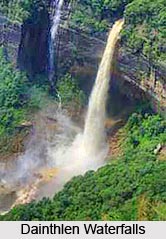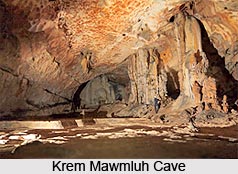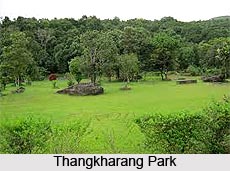 Tourism in Cherrapunji covers many nature and leisure tourism sites. These sites are of prime importance while visiting the North eastern part of India. Shillong in Meghalaya is a place where one can take his shelter under rains. It is known as the Abode of Clouds. Some of the tourist sites are Double Decker Root Bridge, Dainthlen Waterfalls, David Scott Memorial, Khasi Monoliths, Krem Phyllut Cave, Krem Mawmluh Cave and many other sites.
Tourism in Cherrapunji covers many nature and leisure tourism sites. These sites are of prime importance while visiting the North eastern part of India. Shillong in Meghalaya is a place where one can take his shelter under rains. It is known as the Abode of Clouds. Some of the tourist sites are Double Decker Root Bridge, Dainthlen Waterfalls, David Scott Memorial, Khasi Monoliths, Krem Phyllut Cave, Krem Mawmluh Cave and many other sites.
Ram Krishna Mission of Cherapunji
Ram Krishna Mission of Cherapunji is one of the prime pilgrimage tourism sites in Cherapunji. Ram Krishna Mission of Cherapunji was established in 1939. There is a special performance known as Shad Suk Mynsiem or `Dance of the Joyous Heart` organized here during the month of April.
Mawsmai Waterfalls
Mawsmai Waterfalls lie at a distance of few kilometres from Cherrapunji. They reach a height of 1035 feet from the sea level and are supposed to be fourth highest waterfall in India.
Double Decker Root Bridge
Double Decker Root Bridge is amongst the premier attractions of Cherrapunji. It is situated in the Tyma Village and acts as the pride of Shillong for the successful bio-engineering. Basically, Double Decker Root Bridge is a 100 feet long, two-tier living root bridge. The bridge gets across at least 50 people or more at one point of time. For such a bridge to become fully functional, a period of 10 to 15 years is required. The best quality about it is that it gets stronger everyday.
Dainthlen Waterfalls
Dainthlen Waterfalls is located at a distance of 5 kilometres from Cherrapunji. This waterfall acts as a perfect picnic spot, furnishing a pleasant drive full with scenic beauty to look around for, in order to reach here. Rangjyrthej is a village that lies near these falls that is worth a visit. It is believed that people of this region killed a huge snake living in the caves near by the waterfalls and the natural rock carving made by the snake can still be seen.
Krem Phyllut Cave
Krem Phyllut Cave is a 1002 meters long cave. This cave has three entrances and two river passages and is among the major attractions located towards the south of Cherrapunji in Mawsmai village.
David Scott Memorial
David Scott Memorial is a British monument which was erected by the British Government in India in recognition of David Scott who was considered as the most zealous, able and intelligent servant of that time in the North East Part of India.

Eco Park of Shillong
Eco park of Shillong is located in the East Khasi hills District in Cherrapunji of Meghalaya. This amusement park was established by Meghalaya Government in order to foster tourism. It offers a breath taking view of Sylhet Plains of neighbouring country Bangladesh. One will find several varieties of hybrid and indigenous orchids in the green house in the park.
Khasi Monoliths
Khasi Moniliths are the archaeological sites of Shillong. Many of the monoliths were built in the memory of pre historic ancestors that lie scattered around Cherrapunji. One of them in particular, has beautiful intricate structure of interconnecting underground passages that lie beneath old caves.
Krem Mawmluh Cave
Krem Mawmluh Cave is just half a kilometre to west of Cherrapunji. This cave is considered to be India`s fourth longest cave made up of limestone, located at a height of 4503 meters. The main attractions of this cave include a pool formed by five rivers which are entering the cave and the main entrance which is at a height of 10 kilometres above sea level.
Nongsawlia Presbyterian Church
Nongsawlia Presbyterian Church is the famous church established by Rev. Thomas Jones in 1846 who brought Christianity in this region.
Nohkalikai Waterfalls
Nohkalikai Waterfalls is a prime tourist attraction of Cherapunji that lies at a distance of 5 km from Cherrapunji. They are very popular as they have earned the title of being fourth highest waterfall in the world with a height of 1100 feet. The view of these waterfalls falling off a steep cliff is majestic especially during the monsoons to the outlanders.
Thangkharang Park
Thangkharang Park lies at a distance of 12 km from Cherrapunji. This park is directly under the control of the State Forest Department of Meghalaya. Thangkharang Park
overlooks the plains of Bangladesh, and provides a beautiful view of them.

Khoh Ramhah or the Basket of the Giant
There is a huge stone structure of pre historic times called Khoh Ramhah or the Basket of the Giant. It resembles a Khasi basket. The local people of Cherrapunji believe that a giant used to carry this huge stone and hence its name, Khoh Ramhah or the Basket of the Giant.
Kynrem Waterfall
Kynrem Waterfall can be seen from the Thangkharang Park, as they are placed at an altitude of 1000 feet from the sea level.



















